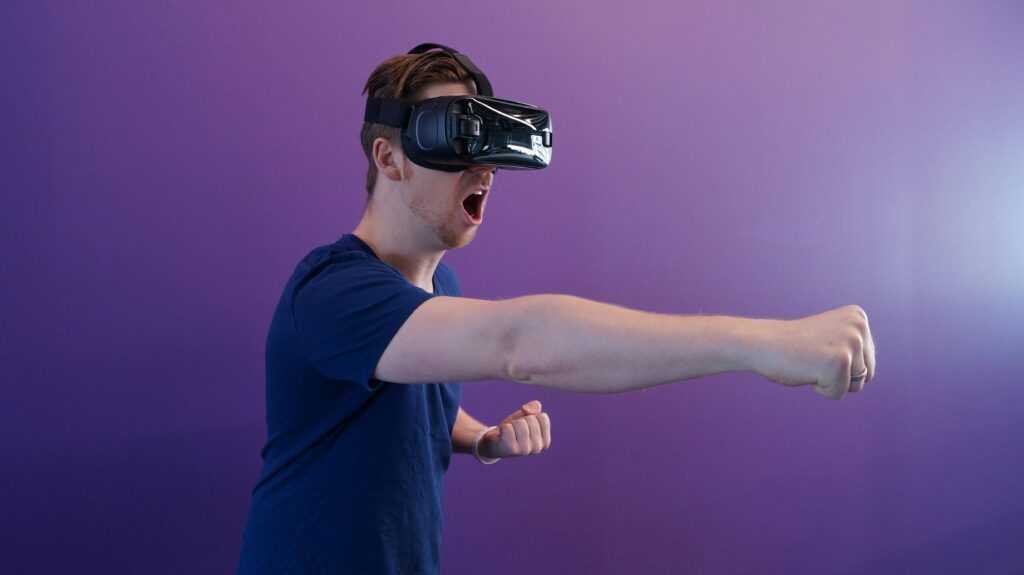In today’s fast-paced digital world, the way we work is constantly evolving. As a remote work enthusiast, I’ve seen firsthand how Virtual Reality (VR) is revolutionizing the landscape of remote work.
With VR technology, I’ve been able to immerse myself in virtual office spaces, collaborate with colleagues from across the globe, and boost productivity like never before. Gone are the days of feeling isolated while working remotely; VR bridges the gap by creating a sense of presence and connectivity.
As I delve deeper into the impact of VR on remote work, I’ve discovered how it enhances communication, fosters teamwork, and ultimately redefines the traditional office setup. Join me on this journey as we explore the exciting ways VR is reshaping the future of remote work.
The Rise of Virtual Reality in Remote Work
As a passionate advocate for remote work, I have been closely monitoring the evolution of Virtual Reality (VR) and its profound impact on remote work dynamics. VR technology is revolutionizing how individuals collaborate and communicate in virtual office spaces, transcending geographical boundaries and enhancing productivity in ways previously unimaginable.
Embracing VR in remote work environments offers a myriad of advantages. By immersing remote workers in lifelike digital environments, VR overcomes the inherent challenges of isolation and disconnection.
This technology fosters a sense of presence and connectivity among team members, effectively bridging the physical gap between them. One of the most significant contributions of VR to remote work is its ability to transform communication and teamwork.
By integrating VR tools into daily operations, teams can engage in interactive meetings, brainstorming sessions, and collaborative projects as if they were physically present together. This level of engagement and interaction not only strengthens team bonds but also amplifies creativity and innovation in a virtual setting.
Furthermore, VR redefines the traditional office setup by offering customizable virtual workspaces tailored to individual preferences. Remote workers have the flexibility to design their virtual environments, enhancing comfort and personalization while maintaining professionalism.
This shift from conventional office structures to personalized virtual spaces marks a pivotal moment in the evolution of remote work practices. In essence, the rise of Virtual Reality in remote work signifies a paradigm shift towards a more immersive, interconnected, and efficient work environment.
By leveraging VR technology, organizations and remote workers alike can embrace a future where distance is no longer a barrier to collaboration, communication, and success.
Enhancing Collaboration with VR Technologies
When it comes to enhancing collaboration in remote work settings, Virtual Reality (VR) technologies play a pivotal role. VR not only facilitates immersive virtual meetings but also promotes team building activities in innovative ways.
Immersive Virtual Meetings
In virtual meetings, VR technology creates a sense of presence as if team members are physically together in the same room. This immersive experience enhances communication by allowing individuals to interact more naturally, share ideas effectively, and engage with visual aids in real-time.
Moreover, the spatial audio feature in VR adds depth to conversations, making discussions more dynamic and engaging. As a result, virtual meetings conducted through VR platforms often lead to increased productivity, better decision-making, and a stronger sense of connectivity among team members.
Virtual Team Building Activities
Virtual team building activities conducted through VR bring remote teams closer together by fostering collaboration and camaraderie. These activities include interactive games, simulations, and challenges that require teamwork and communication to achieve common goals.
By participating in such activities, team members build trust, improve their problem-solving skills, and strengthen their relationships with colleagues, despite being physically distant. VR-based team building activities not only boost morale and engagement but also create a fun and engaging environment that enhances the overall team dynamics and performance.
Overcoming Distance with VR Tools
Incorporating Virtual Reality (VR) tools into remote work environments has revolutionized how teams overcome the challenges posed by physical distance. As a remote worker, I’ve experienced firsthand how VR solutions bridge the gap between team members and enhance collaboration in ways that traditional digital communication tools cannot match.
Using VR tools, I find myself immersed in virtual spaces alongside my colleagues, enabling us to interact as if we were in the same room. This sense of presence fosters a stronger connection among team members and diminishes the feeling of isolation that often plagues remote work.
I’ve noticed that virtual meetings through VR platforms are more engaging and interactive compared to conventional video calls, leading to more focused discussions and enhanced productivity. Moreover, VR facilitates real-time collaboration on projects by providing customizable virtual workspaces where team members can brainstorm, create, and iterate together seamlessly.
The ability to manipulate virtual objects and environments in real-time amplifies creativity and innovation within the team. By leveraging VR technologies, remote teams can simulate in-person interactions and teamwork dynamics, leading to more effective problem-solving and decision-making processes.
Additionally, virtual team building activities powered by VR have proven to be instrumental in fostering a sense of camaraderie and trust among remote colleagues. Engaging in interactive games and simulations allows team members to bond and develop relationships irrespective of their physical locations.
These activities not only promote a collaborative spirit but also enhance communication skills and empathy within the team. VR tools offer a cutting-edge solution to the challenges of distance in remote work settings, creating a more immersive, interconnected, and efficient work environment.
As a remote worker embracing VR technology, I have witnessed firsthand the positive impact it has on team dynamics, collaboration, and overall productivity.
Challenges and Opportunities of VR in Remote Work
Exploring the challenges and opportunities of Virtual Reality (VR) in remote work uncovers a dynamic landscape that presents both advantages and hurdles for users. As I navigate through the realm of VR technology in the context of remote work, it becomes apparent that certain aspects pose challenges that need to be addressed, while opportunities pave the way for enhanced productivity and connectivity in virtual environments.
Let’s delve into the specifics of how VR is reshaping the remote work landscape.
Challenges of VR in Remote Work
- Hardware Requirements: Obtaining and maintaining the necessary VR hardware, such as headsets and controllers, can be a financial barrier for some remote workers. These devices often require high processing power, which may not be feasible for all individuals or companies, limiting accessibility to VR technology.
- Technical Limitations: Connectivity issues, software compatibility, and system glitches can hinder the smooth operation of VR tools in remote work settings. Technical challenges may disrupt virtual meetings, collaborative projects, or training sessions, impacting the overall user experience and productivity.
- Adaptation and Learning Curve: Adjusting to VR interfaces and controls may pose a learning curve for individuals unfamiliar with virtual environments. Overcoming the initial challenges of navigation, interaction, and troubleshooting in VR platforms requires time and training, affecting the onboarding process for new users.
- Enhanced Collaboration: VR offers immersive experiences that foster collaboration and engagement among remote team members. Virtual meetings, brainstorming sessions, and project collaborations in 3D environments enable real-time interactions, enhancing teamwork and creativity.
- Virtual Training and Simulation: VR presents opportunities for realistic simulations and training scenarios in remote work settings. Employees can undergo virtual training sessions, practice simulations, and engage in hands-on learning experiences that mimic real-world situations, improving skills and knowledge retention.
- Customizable Workspaces: Virtual environments in VR allow for personalized workspaces tailored to individual preferences. Remote workers can create virtual offices, meeting rooms, or collaborative spaces that enhance productivity, creativity, and comfort, providing a customizable work environment that meets diverse needs.
By understanding the challenges and opportunities of VR in remote work, individuals and organizations can leverage this innovative technology to overcome barriers, enhance collaboration, and unlock new possibilities for remote teams. As VR continues to evolve, addressing challenges and embracing opportunities will be vital in navigating the future of remote work effectively.



